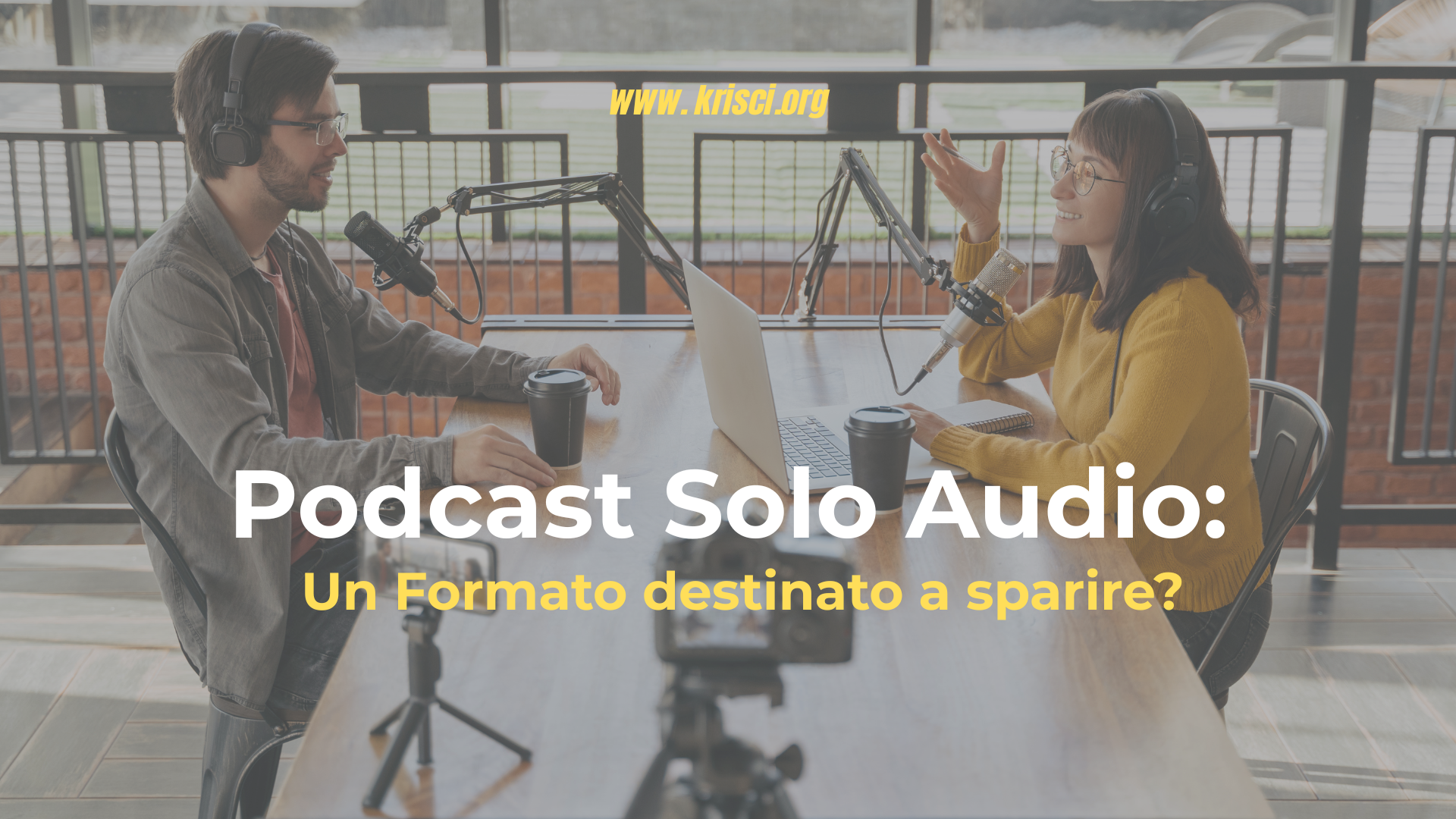In the ever-evolving media landscape, one of the most evident trends is the rapid aging of traditional media audiences. A study on the American population, presented by Amplifi Group, reveals some surprising statistics that highlight this demographic shift. The reaction was one of astonishment when the median age of American viewers across various media platforms was shown.
The demographic data is clear: traditional media are aging, while podcasting attracts a young and dynamic audience. This article explores the demographic shift in media and explains why podcasting represents an extraordinary opportunity for companies looking to remain relevant in the current market.
The aging media Landscape
The analysis of demographic data shows an unequivocal trend: traditional media are rapidly losing their young audience. Here are some significant statistics:
Cable news: average age 70 years
Primetime TV: average age 65 years
Newspapers: average age 60 years
Radio: average age 58 years
Magazines: average age 52 years
Podcasts: average age 34 years
These numbers highlight a seismic shift in media consumption. For example, the median age of linear TV viewers in primetime in the United States is now 64.6 years, far from the traditional demographic target of adults aged 18 to 49. Even networks like FOX, which historically attracted a younger audience, now have an average viewer age of 58 years. This aging trend is also evident in print media, with newspaper readers having an average age of 60 years and magazine readers 52 years.
Podcasting: The new frontier for the Young
In contrast to traditional media, podcasting emerges as a dynamic and youthful medium. The average age of podcast listeners is 34 years, making it the ideal platform for brands targeting young people. This audience is almost three decades younger than the average age of TV viewers and newspaper readers, positioning podcasts as the new "radio" for the digital age.
The growth of podcasting reflects a broader trend towards on-demand content consumption, perfectly aligned with the lifestyle of younger generations. While traditional media struggle to adapt, podcasting thrives on three critical factors: intimacy, flexibility, and loyalty.
Intimacy
Podcasts foster a personal connection between the host and the listener, creating a sense of authenticity and trust that is difficult to replicate in other media. This intimacy allows listeners to feel part of a private conversation, increasing their engagement and loyalty.
Flexibility
Listeners can tune into podcasts anytime and anywhere, seamlessly integrating content consumption into their daily routines. This flexibility makes podcasts particularly attractive to younger generations, who value the ability to access on-demand content.
Loyalty
The engaging nature of podcasts cultivates a loyal listener base that returns regularly for new content. Podcast listeners tend to develop a strong affinity for their favorite shows, creating opportunities for lasting engagement.
Strategic advantages for companies
By integrating podcasts into their marketing strategy, companies can enjoy several strategic advantages:
Reaching the young: With an average listener age of 34, podcasts provide a direct line to young people who are increasingly difficult to reach on other platforms. This young audience is highly desirable for brands looking to build long-term relationships with future consumers.
Engaging content: Podcasts allow for rich storytelling and in-depth exploration of niche topics, making content more engaging and relevant for listeners. Companies can use podcasts to tell authentic stories and connect with their audience on a deeper level.
Targeted advertising: Podcast ads and sponsored content tend to be more personal and less intrusive, resonating better with listeners and increasing ad effectiveness. Several studies have shown that podcast listeners are more likely to remember and act on ads compared to those exposed to traditional advertising.
Implementing an effective Audio Strategy
To fully leverage the potential of podcasting, companies should:
Define clear objectives: Identify what you aim to achieve with the podcast, whether it is brand awareness, thought leadership, or customer engagement.
Create high-quality content: Invest in quality production to ensure the podcast is professional and engaging.
Promote strategically: Use social media, collaborations, and SEO to increase the podcast’s visibility and reach.
Measure and adapt: Monitor listener metrics and feedback to continuously improve content and strategy.
Conclusion
The current media landscape is undergoing a transformation, with traditional platforms aging and podcasting emerging as the preferred medium for the young. For companies, this is an exciting opportunity to engage with a vibrant and growing listener base. By embracing podcasting and developing a solid audio strategy, businesses can position themselves at the forefront of digital marketing, capturing the attention and loyalty of young consumers. Additionally, this type of audio approach can and should be applied to internal company communication to reach employees more effectively, thereby establishing stronger and more loyal relationships within the organization.
Fonte: Steven Goldstein, "Podcasting Captures Younger Audiences In An Aging Media World," 11 giugno 2024.




